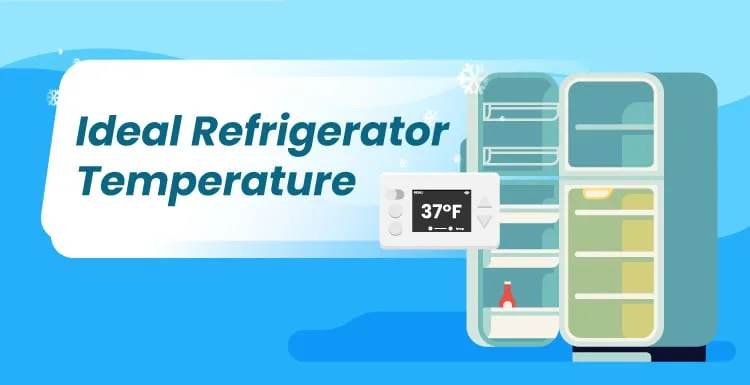Is your refrigerator temperature at the ideal setting?
If you’re not sure, the safety and quality of your food may be at risk. Don’t worry; we’ve made a complete guide to help you get it right.
Does Refrigerator Temperature Really Matter?
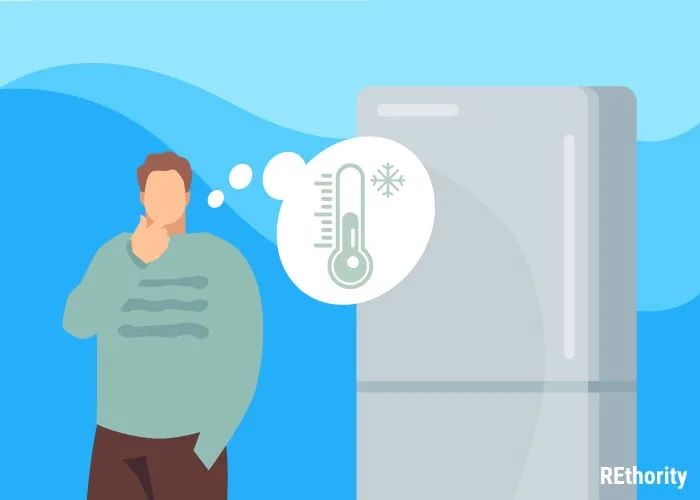
How cold is it inside your refrigerator and freezer? If yours is still on the factory setting, or if you’re relying on what the attached temperature controls say, it might be too warm or cold inside your fridge.
The temperature controls included with refrigerators aren’t as accurate as you’d think. Consumer Reports tested the 12 top refrigerator brands to see how accurate their temperature controls were.
The results? Most are off by at least a degree, and some by as much as 5 degrees. In terms of food safety and keeping items at the right temperature, even a 5-degree difference can be dangerous.
So how can you make sure your refrigerator temperature is safe? We’ve got some easy solutions for you. Keep reading to learn about the optimum temperature for refrigerators and food safety temperature recommendations.
We’ll also talk about setting and understanding the temperature controls on your fridge and signs that your refrigerator thermostat needs to be adjusted.
What Should My Refrigerator Temperature Be?
Refrigerators make it possible to keep food fresh for longer periods of time when they’re set and working properly. If the temperature is off by even a few degrees, your food quality will suffer.
Not to mention that the risk of food poisoning is increasing. So what’s the recommended temperature setting for the refrigerator and freezer?
Recommended Refrigerator Temperature
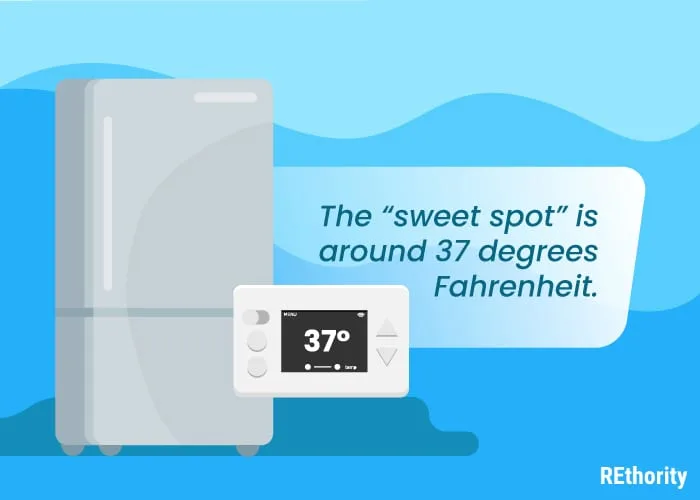
The Food and Drug Administration (FDA) recommends setting your refrigerator temperature to 40 degrees Fahrenheit or lower. Don’t lower it too much, though; you don’t want food and liquids to freeze inside the refrigerator.
The “sweet spot” is around 37 degrees Fahrenheit. This is cold enough to keep bacteria from growing, but not so cold that the fridge’s contents will freeze.
Recommended Freezer Temperature
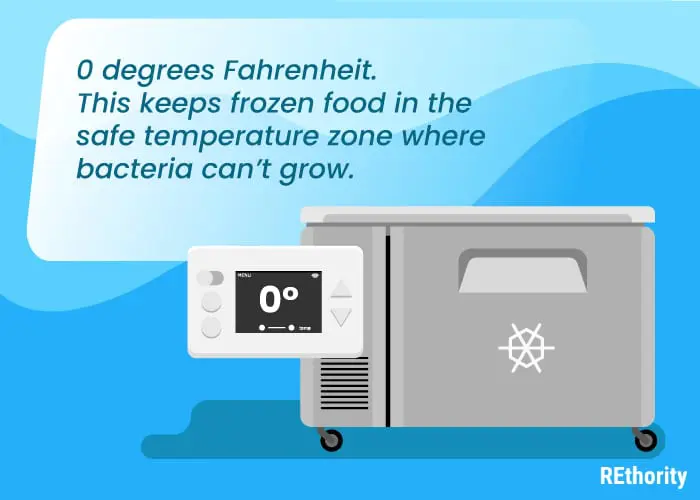
For your freezer, the temperature inside should be 0 degrees Fahrenheit. This keeps frozen food in a safe temperature zone where bacteria can’t grow. It also ensures the food inside stays frozen without partially thawing.
Recommended Temperatures for Food Safety
One reason your fridge temperature is so important is for food safety. At just a few degrees warmer or lower than the recommended temperature of 37–40 degrees Fahrenheit, dangerous bacteria that cause foodborne illnesses can multiply.
The Danger Zone: 41°F to 135°F
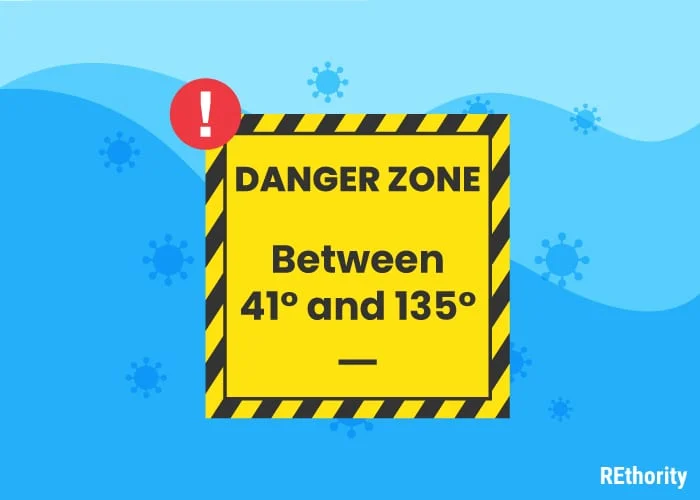
Bacteria like E. coli, Listeria, Norovirus, Salmonella, Campylobacter, and Clostridium perfringens are the main concern for keeping food stored at the right temperature.
They cause nausea, vomiting, and diarrhea, which can start as little as 4 hours after eating contaminated foods. These pathogenic bacteria thrive and multiply in the “Danger Zone” of 41 degrees to 135 degrees Fahrenheit.
A refrigerator set at a temperature that is slightly too high can easily be in the danger zone. At 70 degrees to 125 degrees, dangerous bacteria multiply even faster.
Some species double in number within 20 minutes while in the Danger Zone. Pathogenic bacteria that cause foodborne illness are different from spoilage bacteria.
You can’t smell it, taste it, or see any evidence of it. This means any food items stored at the wrong temperature inside your fridge could still look, smell, and taste like they’re safe to eat.
That’s what makes proper temperatures so important. You could inadvertently eat and serve food that is full of foodborne illness-causing bacteria without realizing it.
The best way to avoid the risk is to keep your fridge and freezer at the right temperature (and check them weekly). At less than 40 degrees, these bacteria can’t multiply and survive.
How to Check Your Refrigerator’s Actual Temperature
Now you know you should keep your fridge at 37 degrees and your freezer at 0 degrees to preserve food quality and inhibit bacterial growth.
These are great guidelines, but they are not terribly helpful if you don’t have a way to know what the actual temperature is inside your refrigerator or freezer.
Most of these appliances come equipped with a dial that allows you to choose from different chill settings (like 1–5). Some have digital screens that let you program them to a specific temperature.
The problem is that dial settings don’t tell you the actual temperature. They just aid you in adjusting to make it colder or warmer inside.
And in appliance tests, digital temperature settings in newer refrigerators are often off by a few degrees. So how can you make sure your fridge is actually as cold as it should be inside and avoid the temperature danger zone?
It’s easy with the help of a simple and inexpensive temperature monitoring device. You need a refrigerator thermometer.
Monitor the Temperature with a Refrigerator Thermometer
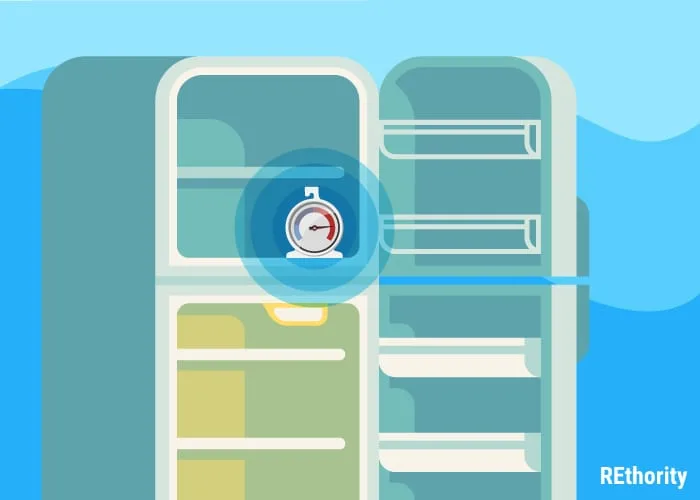
Even the FDA recognizes that factory temperature settings are often inaccurate in refrigerators and freezers. That’s why they recommend purchasing a refrigerator or freezer thermometer to know exactly how cold it is inside.
You can buy these special thermometers almost anywhere: online, grocery stores, housewares sections of department stores, culinary supply stores, etc.
You can purchase them individually for as little as $1.30, but they also come in multi-packs. You’ll need to pop one into the fridge and another into the freezer so you can monitor the temperature of both.
You can find analog and digital refrigerator/freezer thermometers. Analog models are cheaper, but digital versions provide comparably accurate readings and are easier to check at a glance.
Once you’ve got your refrigerator thermometers, make sure to check them about once a week to ensure your current settings are keeping the fridge at the right temperature.
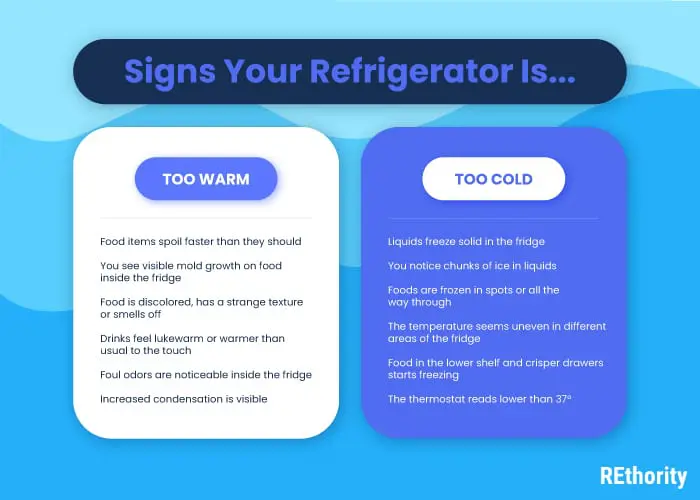
Signs Your Refrigerator Is Too Warm
You’ll be able to recognize when your refrigerator is too warm even without a refrigerator thermometer. Here are a few signs to watch for:
- Food items spoil faster than they should
- You see visible mold growth on food inside the fridge
- Food is discolored, has a strange texture, or smells off
- Drinks feel lukewarm or warmer than usual to the touch
- Foul odors are noticeable inside the fridge
- Increased condensation is visible
Signs Your Refrigerator Is Too Cold
Your fridge should be about 37 to 40 degrees Fahrenheit. If it’s a little too cold, you’ll notice signs like these:
- Liquids freeze solid in the fridge
- You notice chunks of ice in liquids
- Foods are frozen in spots or all the way through
- The temperature seems uneven in different areas of the fridge
- Food in the lower shelf and crisper drawers starts freezing
How to Adjust the Temperature of Your Refrigerator
Keeping your fridge in the ideal temperature range will help you avoid problems associated with foodborne illness, early food spoilage, and reduced food quality.
If you think your refrigerator might be too warm or too cold, you’ll need to adjust the setting to bring it into the safe zone of 37 to 40 degrees.
There are a few different devices that control refrigerator temperature. Check to see if you have a dial, sliding gauge, or digital keypad.
How to Adjust a Temperature Dial
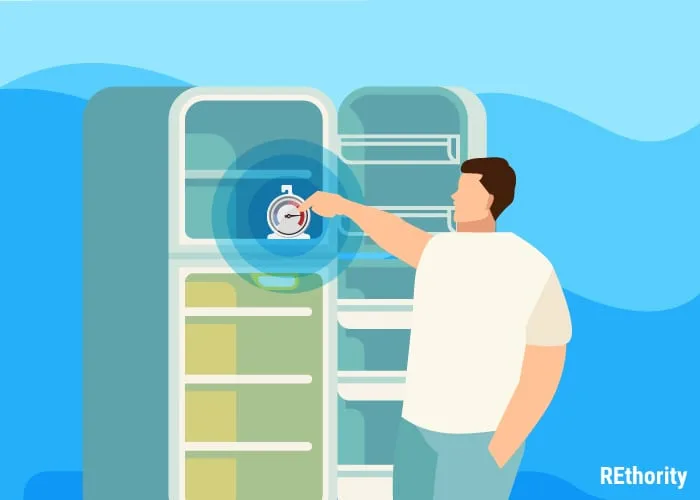
If your fridge is equipped with a temperature dial, you’ll turn it to adjust the internal temperature. Look near the top light to find it. You might see numbers along with words like “cold,” “colder,” and “coldest” on the dial.
There may be an arrow above or below the dial that indicates which setting has been selected. The settings vary by brand and model, so check your owner’s manual to find out more information on each setting.
Yours may be numbered 1–5, but some manufacturers make five the coldest setting, while 1 is the coldest in others. A good rule of thumb is to keep the setting somewhere in the middle.
This is a “3” for models with dials numbered 1–5. Make sure to make small adjustments over a few days rather than a big adjustment at once.
How to Adjust a Sliding Gauge
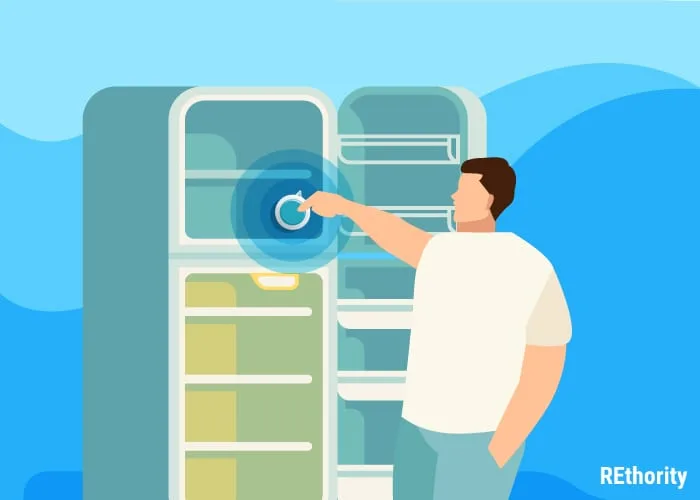
If your fridge has a sliding gauge instead of a dial, it’s just as easy to adjust. You’ll see some type of labeling, usually numbers, on the gauge. Moving the slider inside the gauge will adjust the temperature up or down.
Check your owner’s manual to find out more about each setting’s temperature on the sliding gauge. Make small adjustments to ensure your fridge keeps the items inside fresh and safe to eat.
How to Adjust a Digital Keypad
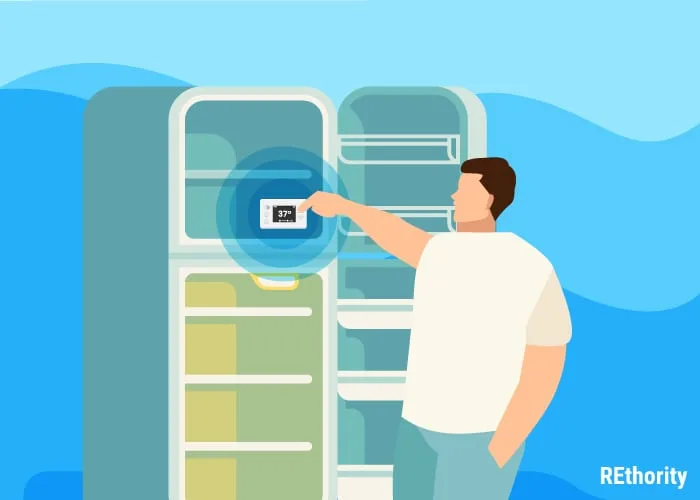
If your fridge has a digital keypad to control the temperature, you’ll see it on the door. The screen is used to adjust the temperature up or down and give a readout of the current internal temperature.
Your fridge might have a digital screen with buttons to control it, or it may be a touchscreen. For a digital screen with a keypad, just press the up or down arrow button to adjust the temperature.
On a touchscreen, you’ll be able to make the adjustments by tapping the arrows on the screen. Adjust the temperature to 37–40 degrees to keep the contents safe to eat and fresh.
What Do the Temperature Settings on My Refrigerator Mean?
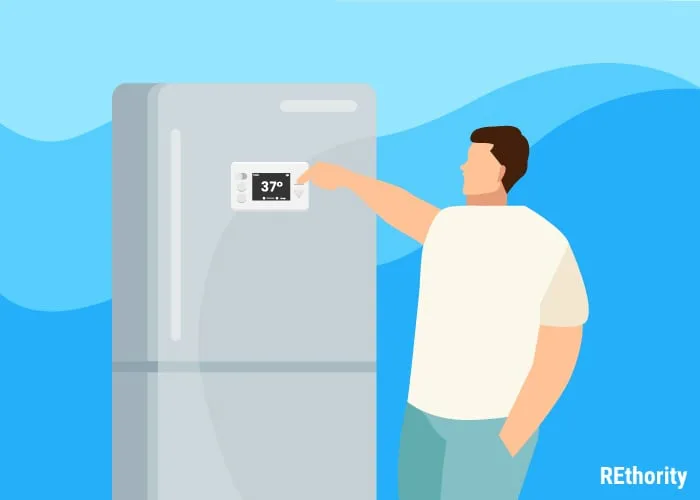
If you have a refrigerator thermometer, you can use it to make specific, accurate adjustments to your fridge’s temperature dial or sliding gauge.
These thermometers can help you “decode” the temperature dial or gauge settings for your fridge. Try moving the dial or slider to one setting colder, and check the temperature again after about 24 hours.
You might find that the coldest setting is too cold, causing liquids to freeze. Keep making small adjustments and checking the temperature the following day.
With the help of the thermometer, you can decide which setting is optimal for your fridge to keep it at about 37 degrees Fahrenheit.
Anytime you’ll be loading your fridge with more food than usual, and during periods of warmer weather, you should adjust the temperature down a bit to compensate.
Maintaining a Safe Refrigerator Temperature
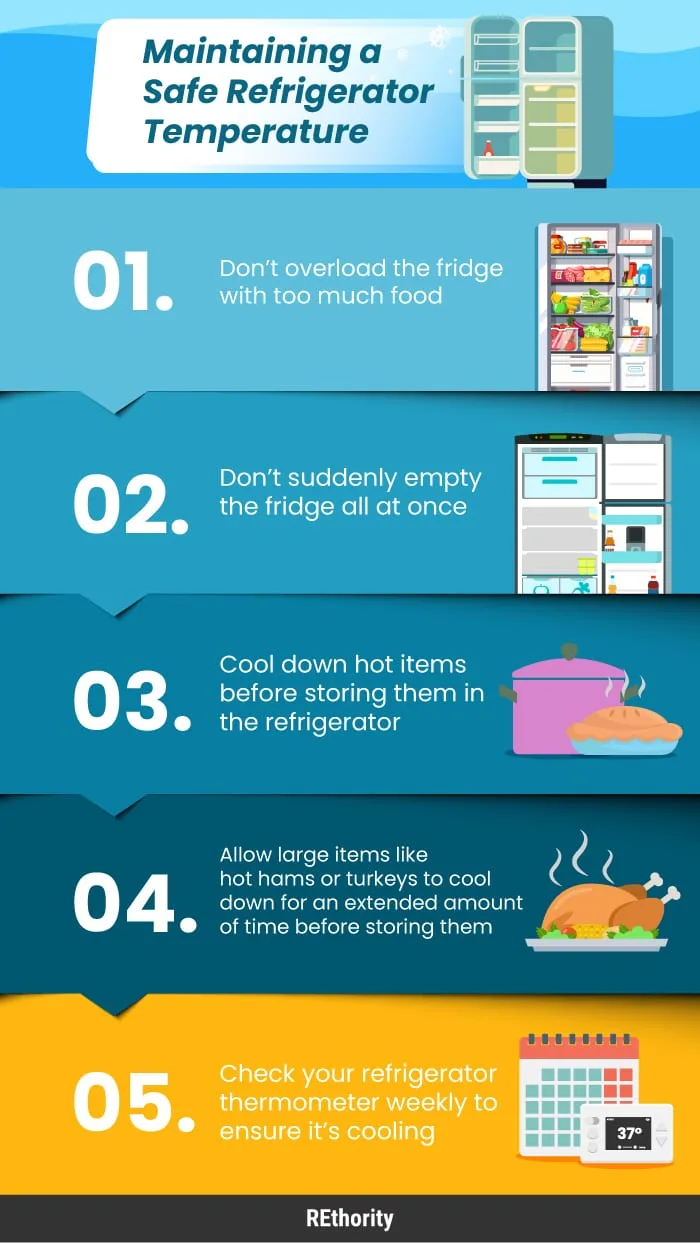
Once you’ve got your fridge in the sweet spot of 37 to 40 degrees, you can make sure it stays in the safe temperature zone by doing the following things:
- Don’t overload the fridge with too much food at once. Make sure to leave enough open space for cold air to circulate and cool the contents to the right temperature.
- Don’t suddenly empty the refrigerator, and leave considerably less food and drink than usual. With more open space to circulate cold air, the refrigerator will overcool the items inside and could freeze items meant to be refrigerated.
- Thoroughly cool hot items down before storing them in the refrigerator. Hot items make your fridge work harder to cool them down, create condensation inside, and are a breeding ground for dangerous bacteria.
- Avoid immediately refrigerating large, hot items (like a cooked ham or turkey). While the refrigerator may cool the exterior down so it feels cold, the inside will stay warm and harbor bacterial growth.
- Check your refrigerator’s thermometer once a week to ensure it’s properly cooling to the right temperature.
What’s The Ideal Temperature for Refrigerator?
As long as you aim to keep your fridge at about 37 to 40 degrees, you’ll create a cold environment that bacteria can’t thrive in.
This ideal temperature range will keep your veggies fresh and crisp, your liquids cold without freezing them, and your meats and dairy in a safe temperature zone.
Adjusting the temperature of your refrigerator might seem like a small thing, but it can have big benefits or consequences if you ignore it.
Take a little time each week to check your thermometer and ensure you’re keeping food in the safe zone, not the danger zone.

